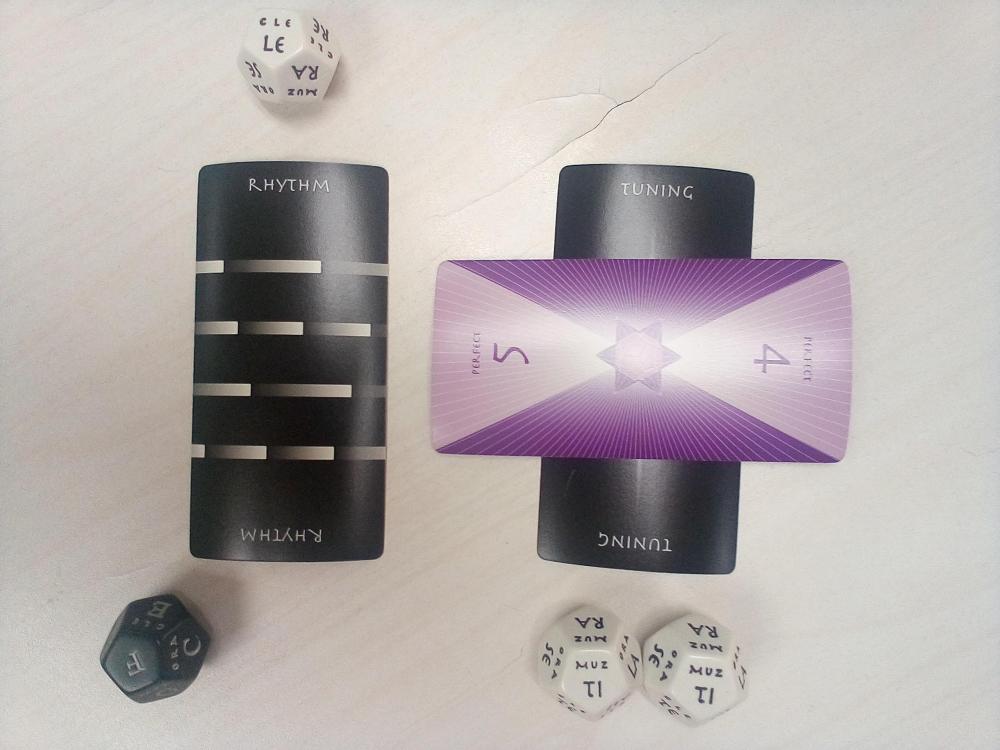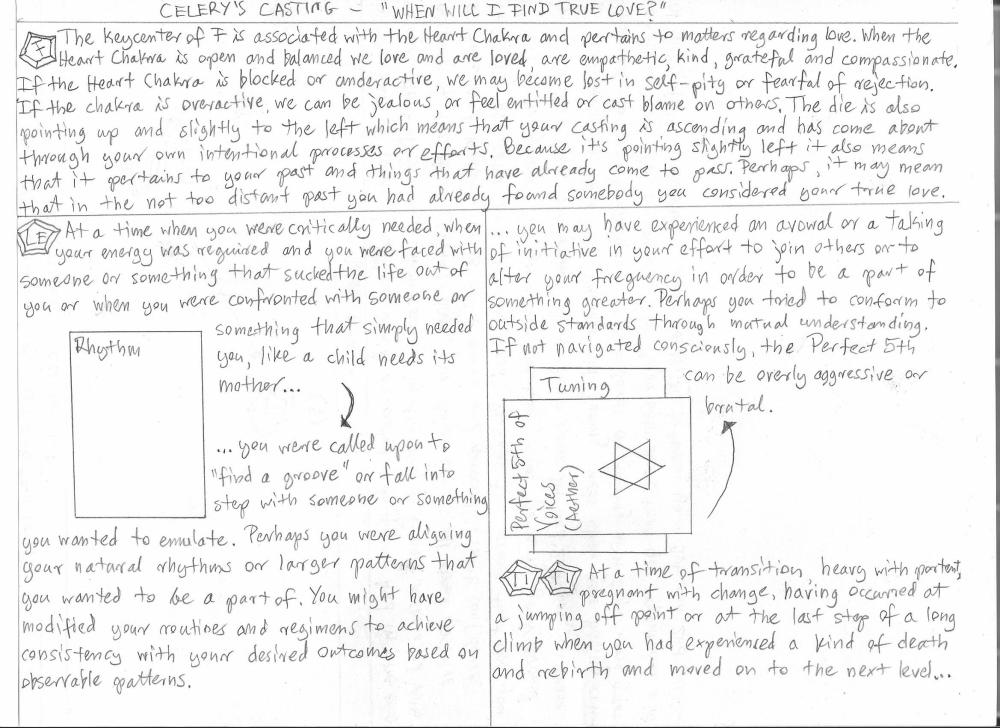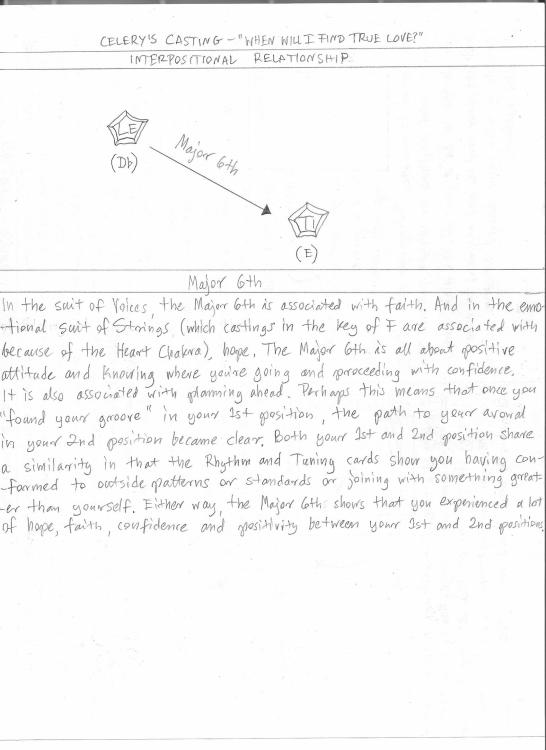All Activity
- Past hour
-
Alister5868 joined the community
- Today
-
PeterthePapercomPoser started following Viola Sonata in C (2022)
-
J. Lee Graham started following Viola Sonata in C (2022)
-
Greetings All: Sharing my Viola Sonata on this Thanksgiving-Eve. The style I was trying to emulate is early Beethoven, in my own inimitable way. The parts are equal - in fact, as was often the case in Beethoven's sonatas, the Piano takes the upper hand about as often as the Viola does. Hope you enjoy! Composed: April 19 - July 4, 2022 at Austin. Style: Classical, ca. 1790-1800. Duration: 18:10. Electronic Rendering by Finale 26 music notation software’s "Human Playback" with NotePerformer 3 artificial intelligence assisted interpretation.
-
- 1
-

-
Henry Ng Tsz Kiu started following Celery's Casting - "When will I find true love?"
-
chopin started following Celery's Casting - "When will I find true love?"
-
Celery's Casting - "When will I find true love?"
chopin replied to PeterthePapercomPoser's topic in Choral, Vocal
This could be a study on how to use slurs effectively in bowed instruments. How did you get the slurs to sound so good btw? The microtones add an interesting color to the piece and the rhythms are fun to listen to. You used 5/8 with a purpose. Also, the ending is so normal and calm compared to everything else, does this mean that love was found after a chaotic journey? -
PeterthePapercomPoser started following Celery's Casting - "When will I find true love?"
-
I am back with yet another Muzoracle casting! This time Celery asked me when she will find true love. The whole casting ended up pertaining to her past so perhaps she may have already found it! (Muzoracle is a storytelling/fortune telling/divination tool similar to the Tarot card deck, but with cards with musical concepts and 12-sided Musician's dice and Solfege dice. Perhaps it may be thought of as a special musical Oracle card deck.) My interpretation of the cards and dice are displayed below. Since castings in the key of F are associated with the Heart Chakra, they accord with the emotional suit of Strings, so I decided to include a Violin and Cello, since Celery also used to play Violin as a kid. Then, in the 2nd position we drew a Perfect 5th of Voices card, so I included prominent open 5th's in the piece and a Soprano singing Celery's question "When will I find true love?" as lyrics. If you'd like to find out more about Muzoracle and how castings are interpreted go here: https://muzoracle.net/ This short musical interpretation of Celery's Casting is about ~1:15 long. Since the black 12-sided Musician's Die landed on F, the piece is in the key of F major. I created the following melodic/harmonic underdrawing guided by the cards and dice. The first solfege die landed on Le, and the second on Ti with a Perfect 5th card in that position allowing me to use the tones Db, E and B natural. In order to smoothly connect to the tonic chord of F major I included the first two positions transposed down a half-step allowing me access to C, Bb, and Eb. The Tuning card gave me the idea of changing the tuning of the piece microtonally. So I decided to bring the tonic chord down a quarter-step momentarily. But all the tones were brought down by a quarter-step, so the intervals used were still your basic 12TET intervals. In order to extend the piece I also transposed the whole pattern up a half step to F# before concluding on a regular F major chord. Also, since I extended the number of positions in the casting to a total of 5 I decided to use 5/8 for the meter of the piece. If you've gotten this far, thanks for reading! And I hope you enjoy listening to this short vocal chamber work I wrote to represent Celery's Casting. Comments, critiques, suggestions, or observations are of course, always welcome. Thanks for listening!
- Yesterday
-
Alex Weidmann started following Whale and the Whaler
-
Whale and the Whaler
Alex Weidmann replied to Some Guy That writes Music's topic in Orchestral and Large Ensemble
This is a really fun piece to listen to! The brass writing is top notch. The highlight for me though, was the duetting between the piccolo and flute. Not a combination I would've thought of using. Love the strange sound of the flexatone! Will have to use that instrument some time in one of my future works. I wonder, would it come through as strongly as this against a full orchestra? Or would it need to be amplified? -
Vasilis Michael started following Favourite 5 Piano Concertos
-
“It is a very difficult topic for me since I have so many beloved concertos. Especially when I have to choose among so many that Mozart wrote. I consider Mozart and Beethoven to be the top, but I certainly also have some from the Romantic composers that I adore. I will definitely include 2 or 3 by Mozart. And the ones I don’t include, I feel like I will be doing them an injustice, but what can I do—I have to choose some.” 1. Μοzart Piano concerto no 25 K503 . ( This is seriously my personal favorite piece in general, i cant describe what that concerto means for me ) 2. Mozart Piano concerto no 24 K491 3. Mozart Piano concerto no 17 K453 4. Beethoven Piano concerto no 4 5. Ok here i have to choose and one of the romantic era that is my favorite and this concerto is Brahms piano concerto no 2 PS: “Ah, if only Schubert had written a piano concerto. How much I would have loved that.”
-
PeterthePapercomPoser started following a nocturne in the style of chopin
-
Vasilis Michael started following Prelude no.14
-
I really love this. Some harmonies are so interesting and gave very special timbre and atmosphere to the whole prelude. Well done my dear friend. I really enjoyed it
-
Actually now top six sould also have Beethoven 5.
-
Tunndy started following a nocturne in the style of chopin
-
I don't say blah blah blah.pdf nocturne in c sharp minor. op.13.mp3 composed this in around an hour, I'm actually quite proud of this for the time I put in it. thought I do feel like it's a bit too similer for comfert to chopin's nocturn in c# minor
-
kya joined the community
-
So, I shared this work in progress a few weeks ago... In the meantime between then and now, I discovered my best friend (my pet) lying in the back yard, unmoving... Tragically, I'd determined that he was killed by my neighbor's dogs... This has struck me very firmly in the chest, and has been difficult to cope with. The little guy was my shadow. Every time I would be composing music, working on a car, doing yard work, or simply sitting outside in the sun, he was always right there, in my lap or somewhere not too far off beside me, supervising or just simply exercising his need to exist in the same space with me. I don't have many people in my life, not anyone who I can physically spend any time with, anyway.. He filled that void. So.. I've decided that I'll dedicate this new score as a way to tell his short life's story instrumentally. The prologue section represents his life before I ever met him. Telling a story of confusion, misplacement, and abandonment, as he was a kitten on his own in the city streets without a family, without his siblings or his mother. My sister found him on a particularly wet and rainy afternoon in september of 2020, near her home, running across the road during heavy traffic. This prompted her to retrieve him in order to prevent him from being hurt, beginning his journey into my care. I don't have a name for the second section, quite yet, but the beginning of the section begins with a light, heartfelt, but careful explanation of the time that we first met, after I adopted him. At that time, I was a bit worse for wear, in the mental department due to the circumstances in my life at the time. He was a gift to me to assist in easing the pain of abandonment that I was feeling in that point in time. We were both careful of one another and learning who each other were. Later in that section, the orchestration demonstrates a bit of playfulness, representing when we became comfortable with one another. From there... I haven't gotten much further. I hope the back-story context is able to shed some light on the composition and the choices made, thus far, in it's writing. Please, let me know what you all think. I appreciate the feedback in advance, and I apologize for not being too conversational, as of late, as I am in the process of mourning his passing, especially given that it was so sudden and tragic... Please bear with me. 🙂New(2).pdf New(2).mp3
-
I agree! I love how Debussy moved his chord progressions along. Thanks for listening I love this too. The sneaky parallel fifths in that string of chords sounds "shiny" to me, my brain kept wanting me to tinker with the counterpoint but I ultimately went with my ears. Thanks for listening, I'm glad you enjoyed it!
-
CLOWNS - Fall 2025 Halloween Competition Submission
sebastian Pafundo replied to sebastian Pafundo's topic in Chamber Music
Thanks for your feedback! The continuous repetition is meant to create anxiety in the listener! Don't forget that the piece is inspired by psychotic clowns; imagine those clowns repeating deranged attitudes toward a person, psychological torture. -
CLOWNS - Fall 2025 Halloween Competition Submission
sebastian Pafundo replied to sebastian Pafundo's topic in Chamber Music
Hi, yes, the program is an older version of Sibelius, that's why there are some problems. -
CLOWNS - Fall 2025 Halloween Competition Submission
sebastian Pafundo replied to sebastian Pafundo's topic in Chamber Music
Hi, I didn't intend for the piece to be in any particular key. Regarding the repetitions and the irritability you felt, I'm happy to hear it, since that's what I was aiming for with the piece: for the listener to feel that discomfort, which I associate with psychotic clowns burning the listener's brain. - Last week
-
Happy Winterval to all! This is a work I posted previously in the incomplete section, and it takes the form of a mini-concerto for violin (with the movements indicated by the rehearsal marks). It's more or less finished now; though I may still have to tweak some of the voice leading, and haven't started writing in the slurs yet. Since I last posted it, have added a coda at the end, and a whole bunch of counterpoint throughout the piece. (N.B. Rehearsal mark C indicates the start of the coda.) The work was inspired by Vivaldi, along with a modern work called "The Gold Standard" by Richard Harvey. (The latter was the main inspiration for the coda.) Think the most successful melody-line is in the second movement, as this carries emotional weight for me. The other two movements are more like baroque dance music. (I could imagine the cast of "Bridgerton" dancing to them at a ball!) I may have to cut the work down, as we're not really supposed to go over 5 minutes, and I'm now at 6. So any suggestions about where I could cut would be very helpful. Not quite sure the structure is properly balanced at the moment, or whether the movements gel together as a coherent whole? Any suggestions on what to name the piece also welcome. N.B. The dynamics and articulation are intended for midi rendition, and will have to be adjusted before I send it to the orchestra who are performing it next year.
-

Sonata no. 6 need feedback!
J. Lee Graham replied to ComposaBoi's topic in Piano Music, Solo Keyboard
This is quite an accomplishment, and intensely beautiful. I'm not qualified to say much more than that because of my rooting in Classicism, but you have my compliments. I hope the dedicatee appreciates it. -
I am so honored to hear such a talented musician play through my piece! Trust me the mistakes are nothing! You played it so beautifully 🥹
-
Sonata no. 6 need feedback!
TheGreatEscaper replied to ComposaBoi's topic in Piano Music, Solo Keyboard
p.s. i hope you don't mind, I attached a one-shot sightread of this piece. obviously a lot of mistakes as completely unpracticed, but I like playing through scores I like as it builds my familiarity + understanding of the piece. I think I feel less strongly about most of my above pieces of constructive feedback having played through the piece, other than still thinking that page 2 is unnecessarily floral for what is kind of a simple theme and the fugue does feel a little underdeveloped. Warning in advance that there are lots of mistakes but I think there are also lots of parts which alright and you might appreciate hearing someone else play through your music 🙂 you can hear me get a lot more confident at the recap -> coda I think. -
Piano sonata no 2 in C major / 4. Allegro
Vasilis Michael replied to Vasilis Michael's topic in Piano Music, Solo Keyboard
Thank you so much for your wonderful words my dear friend. I'm so happy that you like it and appreciated it. I did my best with the whole Sonata. Thanks again for your wonderful words. 🙏🙏🙏🙏🙏 -
Piano sonata no 2 in C major / 4. Allegro
TheGreatEscaper replied to Vasilis Michael's topic in Piano Music, Solo Keyboard
Oh this is awesome 🙂 very full of life and joy, lots of humour in the modulation that never gets too excessive but remains very deft and fun throughout. Everything phrase feels very deliberate and rewarding! It is hard to pick any favourite moments given how well considered the whole construction feels. Entrance of the main theme reminds me a little of I think Stephen Heller's piano sonata no.3 in C major, 1st mvt. 🙂 edit: forgot to mention, final 2 bars are an absolute delight edit2: it's piano sonata no.3 not 4, i misremembered -
Yes, I mostly write in a stream of consciousness. I often use either modes or pitch-classes. Although, when I have 3-4 different, contrasting parts, I often try to repeat some or all parts, maybe in another way, slower, faster. Just now, I'm writing something where I take the first theme, which was made in C aeolian, I repeat it with the first two bars in A harmonic minor, the next in B harmonic minor (not transposed just fitting the notes in the new mode) and then harmonizing in these modes. So I rarely use strict functional harmony, although I sometimes do. My ideas for harmony is also inspired by modern jazz-fusion as well as classical. Someone like Allan Holdsworth, that wasn't educated in music, but created his own weird harmonic language with complex chords that sounds great (IMO) but without functional harmony. If my choice of harmonies reflect that, it's an honour! My "stream of consciousness" are also inspired by Danish late romantic composer Rued Langgaard, especially his 4th symphony ("loevfald" - the falling leaves). Also, I try to go a bit further sometimes, like taking some ideas from "twentieth century harmony" by Vincent Persichetti, and using that as a starting point.
-
Sonata no. 6 need feedback!
TheGreatEscaper replied to ComposaBoi's topic in Piano Music, Solo Keyboard
To be clear: this is a really awesome and impressive work. I have included a bunch of constructive notes in this since you seem keen for some 🙂 listening/reading notes: Introductory page is extremely beautiful. Love the improvisatory nature, spacious without feeling empty [Have to say I am not a huge fan of the F major melody on page 2, it feels a little straightforward to me] Modulation in bar 26 is very nifty 🙂 Love the bass motif in the main F minor subject, very characteristic and memorable Reappearance of the intro subject at 67 is great, everything up to the build and surprise Bb chord (fun trick) at 94 is awesome [95-108 is a little meandering for my taste] Modulations through 117-143 are very compelling and exciting 160-163: *chef's kiss* reminds me of some Rach climax harmonies here. Arpeggios at 165-180 are a little extravagant for my taste Fugue at 181-196 has a nice idea, you have a great subject, I just wish it had a little more time to breathe (4 voices enter on the subject without any development time between their entries). in this area bars 190-195 feel the most effective to me because they feel the most balanced; the voices here have rhythmic variety to distinguish themselves clearly and there's a little more negative space to guide the ear. I feel like the classic fugal structure of introduce voices 1 and 2 (maybe 3 if you're feeling brave), and then have some development time before introducing more voices, would work well here. It feels a little more like a gesture towards a fugue than a fugue (maybe it's a fughetta). Recap is great 🙂 i do like this theme a lot. The crunchy move in bar 229 is great 263-290 feels like it could be trimmed. We've just heard this theme in the recap a few moments ago anyway, and the straightforward dotted rhythm is not the most exciting thing to zone in on for several more bars. It feels the movement on top of the tremolo is a bit slow. But the exit out into 291 is very beautiful. I love the intro, so obviously I love the outro too 🙂 And to be fair, the F major theme from the start pays off pretty well in bars 317-318, great way to finish. (Maybe just something a bit briefer / less extravagant than page 2 would suit me.) I really like this piece! I think there is possibly a 12-13 minute version that I *love*, but it is not my place to play editor haha -
Hi Stig. Just listened to "Evening Sun" It seemed like a stream of consciousness; rather than something with a fixed structure (such as Sonata form, Rondo form, etc...). I found some of your harmonies quite interesting and unexpected. Perhaps this is your unique was of composing. Have subscribed to your You Tube: so will try to listen to more of your work in the future.
-
harmonies in bar 3 (loove the surprise Csharp) and 34 (yay raised sixth!!!) are my faves 🙂 whole thing has a wonderful melancholy vibe. the tresillo rhythm of the middle section is a fun vibe to bring into it

.thumb.png.8b5b433a341551e913a34392660bc95b.png)








